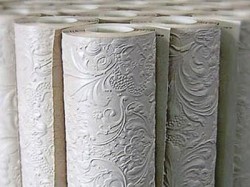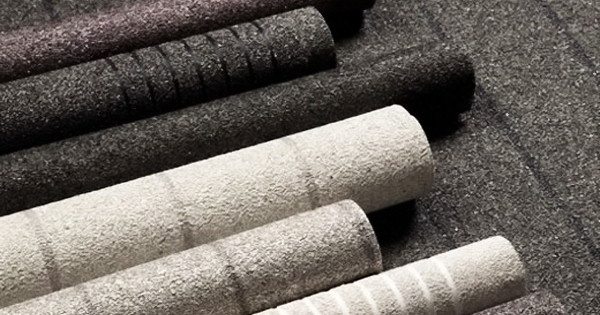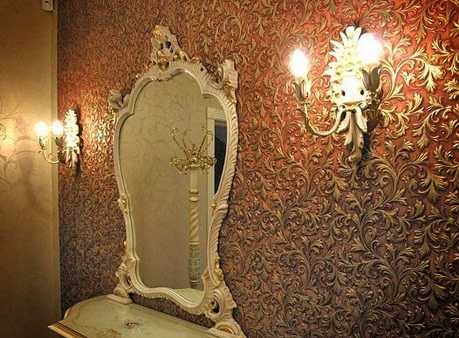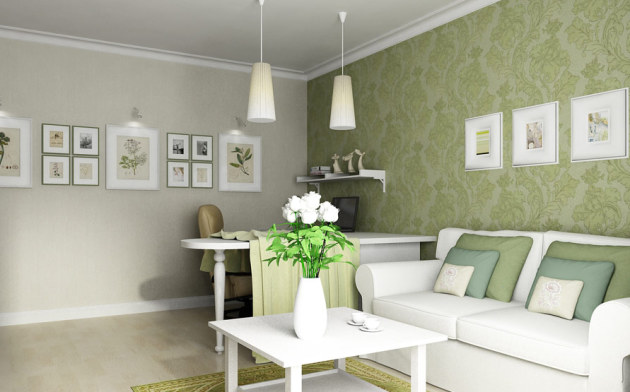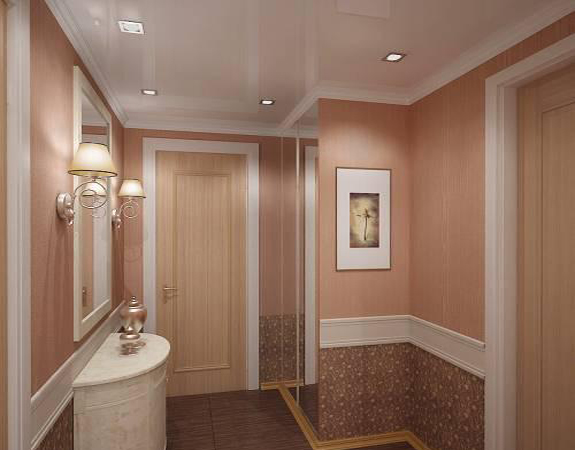Wallpaper Lincrusta (Lincrusta): from choice to sticking
Linkrust is back in fashion after a long period of oblivion. It is noteworthy that it was invented in the 19th century, having come to replace stucco molding in the homes of nobles, since its manufacture was an expensive and troublesome process, and the linkcrust looked no worse.
Lincrusta itself, and it is also often called Lincrusta, is a wallpaper with a relief, which on the wall gives the impression of stucco molding, it looks very expensive and luxurious. It is especially suitable for classic interiors, although it is also used in restaurants, public places, ordinary city apartments - such walls immediately distinguish a room from a number of similar ones.
By the way, many generally only link stretch the wallpaper to wallpaper, since it looks very much like stucco molding, but we will still classify it as a type of wallpaper, since it is sold in the same way in rolls, it has a classic one as for wallpaper, sticking scheme.
How to produce Lincrusta wallpaper?
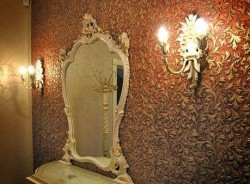 Linkrust is considered a material with high environmental performance, since in production, as well as 100 years ago, only natural materials are used. The basis in these wallpapers is paper, but the relief layer is formed from very finely rubbed wood flour mixed with chalk, wax, rosin and some other natural ingredients. A pre-prepared mixture is applied to a paper base, and then a relief is created by rolls-dies. Next, the canvas is cut to standard sizes and dried for two months.
Linkrust is considered a material with high environmental performance, since in production, as well as 100 years ago, only natural materials are used. The basis in these wallpapers is paper, but the relief layer is formed from very finely rubbed wood flour mixed with chalk, wax, rosin and some other natural ingredients. A pre-prepared mixture is applied to a paper base, and then a relief is created by rolls-dies. Next, the canvas is cut to standard sizes and dried for two months.
An interesting feature of linkrust is that over the years it only gets stronger, because the natural components harden, and this is an amazing and exceptional phenomenon in the world of wallpaper. True, at the first stages after gluing, they are a little fragile, which is why they are recommended to be varnished. But now the linkcrust that was glued in the palaces about a century ago still holds and has a beautiful view. So with normal care, this is a fairly durable coating.
 It is worth mentioning that not all manufacturers adhere to the original linkcrust manufacturing technique, therefore, there are also such materials that include synthetic resins, artificial plasticizers, etc., which, although it reduces the cost of the product, makes it less environmentally friendly and durable.
It is worth mentioning that not all manufacturers adhere to the original linkcrust manufacturing technique, therefore, there are also such materials that include synthetic resins, artificial plasticizers, etc., which, although it reduces the cost of the product, makes it less environmentally friendly and durable.
Lincrust from natural materials has a beige color and is intended for painting, but nevertheless its specific external properties make it possible to distinguish it from other wallpaper for painting. The same options that are manufactured using synthetic substances may already have a certain color, which simplifies the process of creating the finish.
Advantages, Disadvantages and Choice
Linkrust - a material with a lot of advantages, and we’ll start with them:
- naturalness, which was already mentioned above, is a huge advantage of this material, which makes it possible to use it in rooms of any type. True, special substances are added to the composition for strengthening the outer layer, but they do not affect the final environmental friendliness of the material;
 environmental friendliness also manifests itself in ability to breathe, so there should be no problems with the microclimate in the room, such as excessive humidity;
environmental friendliness also manifests itself in ability to breathe, so there should be no problems with the microclimate in the room, such as excessive humidity;- the chances that the material will begin to delaminate over time are extremely small, since in production the top layer penetrates the base and becomes one with it, which is not the case with some other multilayer coatings;
- can not help but remember longevity: as already mentioned, over time, the material only becomes stronger. And the facts that such decoration, made at the beginning of the last century, is well preserved in buildings, and even cabins and wagons, which have long been decommissioned, says a lot;
- linkcrust resistant to mechanical damage, not subject to various kinds of deformations, including shrinkage, withstands shock and water ingress, so some use it also in bathrooms. It is worth noting that in the manufacture of linkrust, linseed oil is used, which has antiseptic properties, therefore, even with water, mold and fungus will not develop;
- enough easy care also becomes an advantage - as far as the need to dust off or wipe with a damp cloth is enough;
- the ability to paint the material in any color you like, use several colors, or even create separate drawings is also an indisputable plus on the way to creating an original interior. And the luxurious appearance will make even an ordinary room look much richer and more presentable. In urban apartments, linkcrust is used not only as wallpaper, but also as decoration of furniture, walls and ceilings, which are only partially pasted over with this material: as an option - only one wall or part of it is finished with linkcrust.
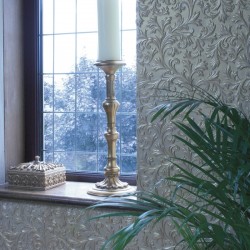
But even material such as linkrust does not do without its disadvantages. Although popularity returns to it, nevertheless, some properties do not allow calling it a universal material:
- in the first place, as in many cases, is price. Although this is not a natural stucco molding, such an analogue will also cost a lot, and not only the appearance, but also the price will tell about luxury. Moreover, the cost consists not only of the price of the roll itself, which is also not low, but also of the cost of installation, glue, as well as painting and decorating;
- installation process more complicated than with ordinary wallpaper, so if you are not 100% confident in your abilities, it is better to resort to the services of specialists;
- the only operational minus is intolerance to low temperaturesin which the linkcrust becomes very fragile and begins to crumble.
The variety of different types of linkrust on the market of finishing materials is quite extensive, so it will be easy to find a pattern to your taste, and with a competent approach to interior design this finish will look stylish and organic in any room, giving sophistication.
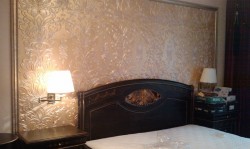
It is worth paying attention once again to the fact that the material can be on a natural and synthetic basis, therefore, if naturalness is a priority for you, then specify the composition in advance.
If the desired pattern is not found, then some manufacturers will be able to produce linkcrust according to your order with the original design, but such an individual approach, of course, will cost a lot.
When choosing a paint color for coloring, consider combining colors, as using one color is sometimes boring. In general, you should think through all the little things in advance, especially the type of pattern and type of painting.
Linkrust installation
Installation of linkrust, though not the most difficult task, still requires a very thorough approach. After reading the entire technology, everyone can decide for himself whether he can manage it on his own or whether it is better not to risk it.
Necessary tools
 wallpaper itself;
wallpaper itself;- type adhesive: perchlorovinyl, based on flour paste, etc .;
- warm water;
- rags;
- glue brush;
- a plumb line and a pencil for drawing straight vertical lines so that the gluing is done evenly;
- plastic spatula for leveling wallpaper;
- joint roller;
- ladder;
- wooden slats and nails for temporary wallpaper mounting;
- putty for filling holes from nails;
- paint of the desired shade;
- inker.
Surface preparation and wallpaper
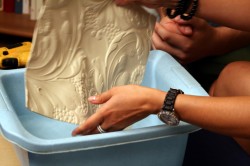 So, like all wallpapers, linkcrust requires careful preparation of the surface: in the end, it must be smooth and dry. Naturally, you need to get rid of all traces of past finishes, putty all the cracks and completely level the surfaceto sand. All skirting boards and sockets must also be removed before starting work.
So, like all wallpapers, linkcrust requires careful preparation of the surface: in the end, it must be smooth and dry. Naturally, you need to get rid of all traces of past finishes, putty all the cracks and completely level the surfaceto sand. All skirting boards and sockets must also be removed before starting work.
The use of a deep penetration primer is necessary, and after its use it is better to give time a day or two to stand and dry, in order to finally get a normal result. After drying the primer, some experts recommend that the surface is again puttied, sanded and primed, but often there is simply no need for such actions.
Linkcrust wallpapers also require prior preparation. Firstly, firstly, it’s a very traditional process - you need to cut the wallpaper into stripes of the desired length, given that the pattern on the adjacent stripes should match. Secondly, then the finished strips need to be twisted again into small rolls and soaked in hot water (temperature 600C) within 10 minutes.
Then the wallpaper is laid out on a flat surface in a stack, using a rag to remove excess water from each strip. In this state, they are left for 8-9 hours, so that they are well saturated with water, softened, and shrink. It is convenient to carry out such "soaking" at night so that everything is ready in the morning. After all this, it is worth hoping that the joints will be generally imperceptible.
If you purchased a fabric-based linkcrust, then pre-soaking is not required.
Sticking
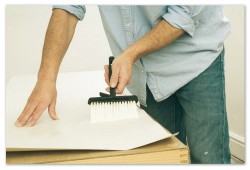 Just a few words about the choice of glue. For these works, glue based on flour paste with the addition of wood glue, perchlorovinyl glue, as well as Bustilat are suitable. All work is recommended to be carried out at a temperature not lower than +150C in the absence of drafts.
Just a few words about the choice of glue. For these works, glue based on flour paste with the addition of wood glue, perchlorovinyl glue, as well as Bustilat are suitable. All work is recommended to be carried out at a temperature not lower than +150C in the absence of drafts.
Prepared glue is best applied both to the wallpaper itself and to the walls. An ordinary brush is perfect for this. After the glue is applied to the wallpaper, they should be folded in half and kept for about 10 minutes so that the glue is well saturated.
On the walls, using a plumb line and a pencil, you can first draw lines - they will help for perfectly evenly gluing wallpaper strips. Then everything is as usual: glue the first strip of wallpaper, smoothing so that there are no air bubbles, wrinkles and wrinkles. The next strip is glued end-to-end, tight to the first, observing the correctness of the pattern and pressing the edges.
 Linkrust refers to heavy materials, so it can move a little after gluing. Therefore, after the installation of each strip, it is not superfluous to nail a wooden plank at the top: it will keep the wallpaper from slipping, after drying it is dismantled, and the traces of nails are putty, and when stained they become completely invisible.
Linkrust refers to heavy materials, so it can move a little after gluing. Therefore, after the installation of each strip, it is not superfluous to nail a wooden plank at the top: it will keep the wallpaper from slipping, after drying it is dismantled, and the traces of nails are putty, and when stained they become completely invisible.
In the corners, the wallpaper is usually joined, but if this does not work out, then it is worthwhile to press the wooden rail tightly and attach it so that the wallpaper does not peel off. Then they dismantle it and do the same as with the rails at the top.
After gluing, the walls should dry for several days, and preferably a week, so take your time and let them dry thoroughly. Only after this it is possible to start painting, with the baseboards and platbands better put in place before painting, and sockets and switches after.
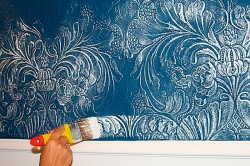 Staining can be done with several types of paints. So, the oil one will hold on to the linkrock hardest, but lately acrylic has been especially popular - it is more environmentally friendly, it has more shades, but after a while it begins to react with wallpaper materials and is easily susceptible to damage. But still, with careful operation, it is able to last more or less long.
Staining can be done with several types of paints. So, the oil one will hold on to the linkrock hardest, but lately acrylic has been especially popular - it is more environmentally friendly, it has more shades, but after a while it begins to react with wallpaper materials and is easily susceptible to damage. But still, with careful operation, it is able to last more or less long.
Each paint color is chosen for the interior, it is better to paint with rollers. But often, in order to make the interior more interesting, you need to highlight relief details, and for this you can use silver or golden shades of wax paste - this decoration is well suited for a classic interior.
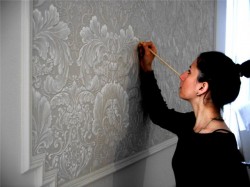 Sometimes after drying between cracks of wallpaper, cracks occur: they need to be carefully puttied, sanded after a couple of days, and then apply the same paint that is used for wallpaper - there will be no residue at all. This is good for linkcrust: the stitches after staining are generally imperceptible.
Sometimes after drying between cracks of wallpaper, cracks occur: they need to be carefully puttied, sanded after a couple of days, and then apply the same paint that is used for wallpaper - there will be no residue at all. This is good for linkcrust: the stitches after staining are generally imperceptible.
Linkcrust Care
Caring for this finishing material is simple: if necessary, dust off it or wipe it with a damp cloth. The coating is not even afraid of friction with a brush, and any damage can be easily removed: dents, for example, can be puttied and tinted, and if there are any very dirty areas or a desire to change color, you need to wipe the wall with white spirit. Then you can paint in any desired shade or tint, while if the previous layer of darker paint, then a new one will need more, because you have to apply it in several layers.

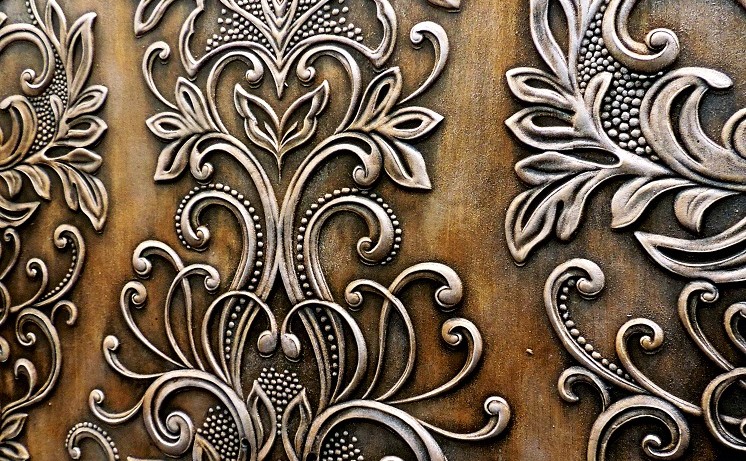 environmental friendliness also manifests itself in ability to breathe, so there should be no problems with the microclimate in the room, such as excessive humidity;
environmental friendliness also manifests itself in ability to breathe, so there should be no problems with the microclimate in the room, such as excessive humidity;